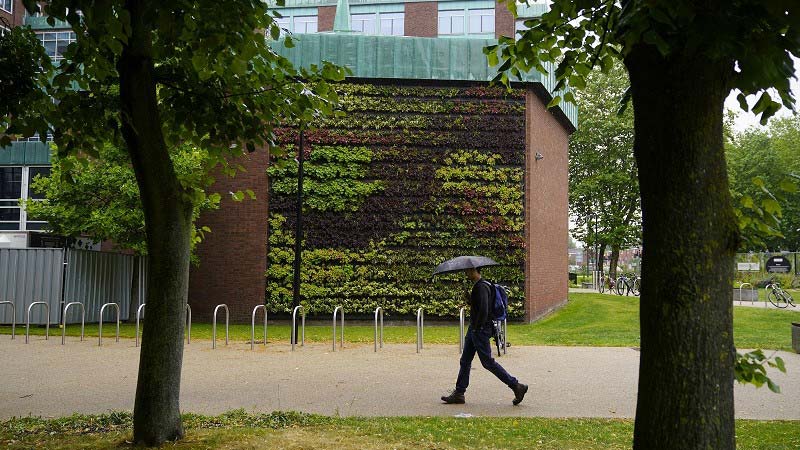What will the world look like in 2030?
If the last 10 years are anything to go by, real estate is in for big changes
New technologies changed the world at an unprecedented pace during the 2010s. And it’s only going to get faster in the next decade.
To keep up, cities will need new innovations for their rapidly-growing populations. Companies will look for solutions that work for not just employees, but also for the environment and local communities. Investors will have to contend with an incredibly long period of low interest rates.
But how exactly those broad trends will impact markets, business decisions, and our wider lives is tougher to answer.
Technology everywhere
Technology now dominates discussions, from individuals to governments, for good reason. Over the next decade it will continue to reach further into every corner of our daily lives.
Advancements in artificial intelligence and automation – from 3D printing to robotics – will be a focal point. One of the biggest outcomes will be significant dislocation in labour markets, says Andrew Ballantyne, Head of Research, Australia, JLL.
“However, we believe that technological advancement generates as many jobs as it displaces,” he says. “STEM (scientific, technology, engineering and mathematics) are expected to see the strongest growth over the 10 years to 2030.”
As driverless cars take to the roads, parking spaces will become less necessary. In their place will be homes, shops, and warehouses for last-mile delivery, says Myles Huang, Research Director, JLL Asia Pacific.
“Large, stand-alone parking garages, especially near airports or other tourist attractions, can be converted into hotels,” he says.
With city populations set to keep expanding, more homes will be required. “The next 10 years will bring even more challenges in terms of housing, congestion, and rising costs in an increasingly dense world,” says Amber Schiada, Senior Director of Research and Strategy, California at JLL.
This is where technology in its infancy today will be used to meet housing demand, says Nick Whitten, Head of UK Living Research & Strategy. “Rapidly advancing tech could see more homes delivered off a production line by 2030, speeding up delivery,” he says.
The future of good work
Hologram-conferencing may be a reality by 2030 and the standard 9am-to-5pm office job could be a distant memory as more people work flexible hours. But offices will still be needed for the face-to-face meetings and decision-making. And the digital-first office of the future will be designed round individual needs and preferences.
“We’ll see the smart office adopt more of the technology that’s making inroads into smart homes today like devices connected to the Internet of Things and customisation of spaces through digital apps,” says Tom Carroll, Head of Corporate Research and Strategy, EMEA. “A new generation of digital natives coming into workplace will expect an interactive digital experience.”
As real estate shifts toward a consumer product, it will no longer be acceptable to just deliver an office and expect tenants to sign a 10-year lease, says Scott Homa, Director of U.S. Office Research Space, JLL.
“Tenants are looking for real estate that is fast, flexible and fun,” he says, noting consumer preferences for move-in-ready, flexible-term, hassle-free spaces with lots of amenities.
It’s not just for offices. All types of real estate will have to adapt, even warehouses.
“Warehousing will evolve further again to include childcare facilities, breakout areas and greater amenities,” says Tony Iuliano, Executive Director, Head of Capital Markets Industrial & Logistics – JLL Australia. Like with offices, “warehouses will have to provide greater amenities to get people to work there.”
As governments, companies and employees zero in on sustainability, buildings – as well as their operations – will boost their green credentials.
“The focus will very much be on addressing climate change and how landlords and tenants can make the move to operate at net zero carbon and not play catch-up in the years to come,” says Sophie Walker, JLL UK’s Head of Sustainability. “Buildings and infrastructure are responsible for around 40 percent of the UK’s total carbon emissions. The time to act is now.”
It’s the economy
While tech and sustainability may grab the spotlight, the global economy will equally provide its own challenges in next 10 years. Interest rates won’t return to their previous highs, equity markets will test new heights, and central bankers will have to learn to use the largely new toolkit of macroprudential policy, says David Rea, EMEA Chief Economist at JLL.
“European societies will see the fastest increase in the aged population, changing markets and prospects for consumer goods in the process,” he says.
For commercial real estate investors, they will be looking at an asset class that has become mainstream. While demand has soared, the amount of high-quality stock preferred by long-term investors like pension funds and insurance companies has not kept pace.
This supply shortage is “something that is likely to persist,” Ballantyne says. “This will ultimately lead to increased allocations to alternative real estate, with some of those sub-sectors becoming more mainstream.”





